At one point or another, we’ve all asked it. That one question that never fails to stir up a fight on four-wheel-drive forums and social pages the world over, What is the ultimate overland vehicle? Plenty of people have voiced their opinions, but from Jimnys to Unimogs, their responses couldn’t be more diverse. Some might say that the best choice is whatever you have already, but I’d argue that’s not always the case. In my opinion, the best overland vehicle isn’t necessarily what you own now, but whatever suits your needs best. For some, it really could be that old Land Cruiser or 2-door Range Rover, but for many families in North America, a domestic full-size vehicle is probably a better fit. I know, it’s heresy to suggest that the truck or SUV in your driveway might be your perfect choice, but it’s true. They have huge payload capacities, are relatively affordable, comfortable for long trips, can tow easily, and have a wide support base with readily available parts. With all of these factors in their favor, we decided to go full size with a 2000 Ford Excursion.

Checking all the Boxes
At first glance, this long and low-slung SUV may seem like an odd choice for overlanding, but take a look at its credentials, and things begin to make sense. You see, the Excursion was released in 1999 as a direct competitor to the Chevrolet Suburban, the segment’s reigning platform since the mid-1930s. At the time, gas prices were low, SUV sales were continuously rising, and it seemed that bigger was indeed better to new car buyers, so Ford went huge by basing their new SUV on the existing F-250. Many niceties were added, of course, including additional sound deadening, longer passenger doors for more leg room, and a softer spring package, but underneath all the fluff was the heart and soul of a work truck. That lineage grants the Excursion some pretty unique features for North American SUVs.
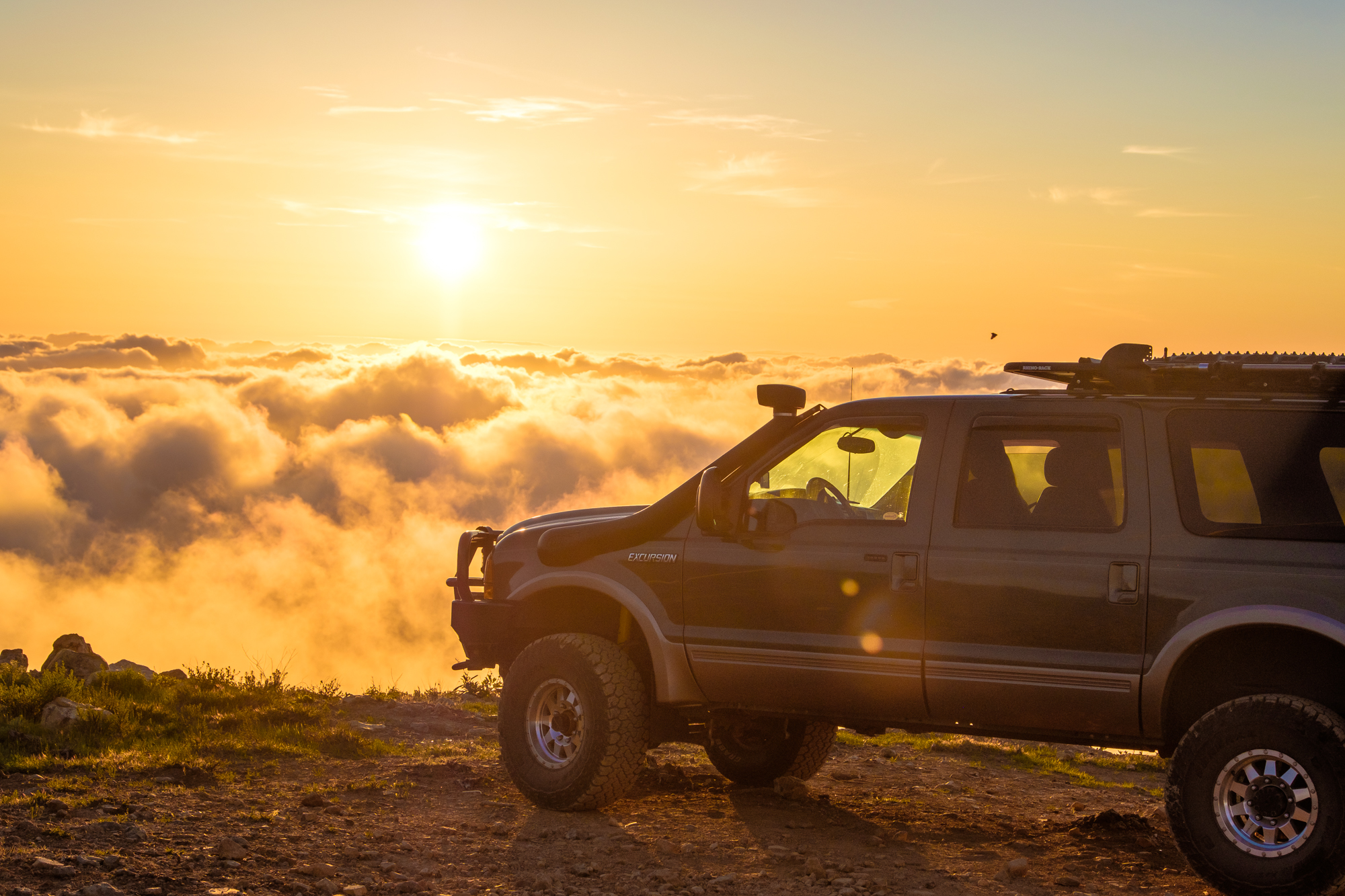
It’s a body-on-frame design running solid axles underneath, specifically, a Dana 50 up front, and a Sterling 10.5 in the rear. It can tow 10,000 pounds, has a payload capacity of over 1,500 pounds, and the interior is large enough to accommodate a stack of 4- by 8-foot sheets of plywood without removing the seats. The real selling point though was the available 7.3L turbo-diesel motor from Navistar International. This engine has proven to be one of the most reliable models ever used by Ford, and while its 250 horsepower may not make the Excursion fast, the 525 pound-feet of torque gives it enough grunt to climb over or through anything in its path. Of course, I expected as much from a diesel truck, but the motor’s respectable fuel economy surprised me—between 16 and 20 mpg stock on the highway. When combined with the factory 44-gallon tank, that grants the Excursion a range between 700 and 880 miles. All of that in a package the same length as a double-cab Tacoma.
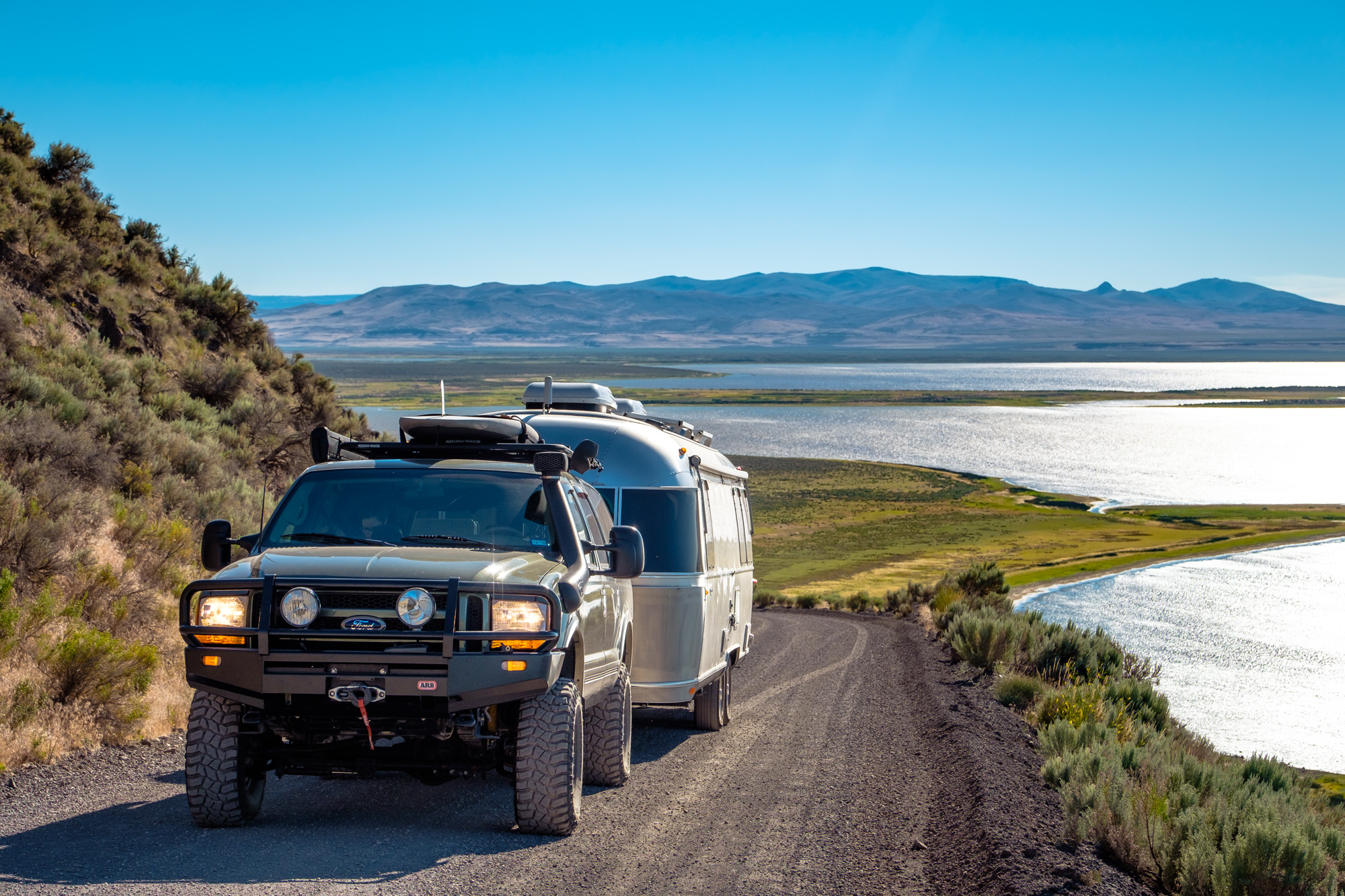
By the numbers, it’s one of the most attractive overland platforms around; the only thing it lacks is the cachet of a flannel-wearing fan club posting sepia-toned photos on Instagram. Fortunately, my goal wasn’t to build the most popular truck around. It was to build a vehicle that I could comfortably sleep inside, take on long unsupported adventures, use to tow our 27-foot Airstream, and still hit the trails on the weekends. A tall order to be sure, but one the Excursion was born to fill.
Performance and Protection
The first challenge was making the Excursion more capable on the trail, which all started with suspension. From the factory, the Excursion was nearly 2 inches lower than an F-250, and a few trips through the desert made it abundantly clear that wouldn’t do. High-performance options from Carli and Icon were considered, but in the end, we went with an Old Man Emu kit. Sure, it doesn’t ride as well as those alternatives, but its durable spring packs are well suited to our carrying weight and towing needs, along with the speeds we usually drive. Plus, it’s half the price of the other systems, a fact my wallet couldn’t ignore. We selected their heavy springs all around, and since the kit was designed for the F-250, installed an add-a-leaf in the rear to offset the Excursion’s larger fuel tank and additional body weight. Finally, a set of Firestone airbags were added to augment the rear springs while towing; paired with Daystar cradles, they allow the bags to lift free of the frame preventing tearing under heavy articulation. This system netted about 4 inches of total lift over the original sagging springs.

That gave us plenty of room to clear a set of E-Rated 315/75/R16 Falken mud terrains, and later a set of Cooper STT Pros on Method Standards. I’m not a big fan of faux beadlocks, but these wheels enabled us to turn to the stops without rubbing, and met the tire’s minimum width requirements, solving two issues with the factory wheels. The larger tires, on the other hand, have been nothing but good. They granted us additional ground clearance, plus a huge improvement in off-pavement handling. I’ve been especially impressed by the Cooper’s durability and handling while towing. After 10,000 miles, more than half of which we’ve been pulling a trailer, they are wearing evenly and still feel solid on the road.
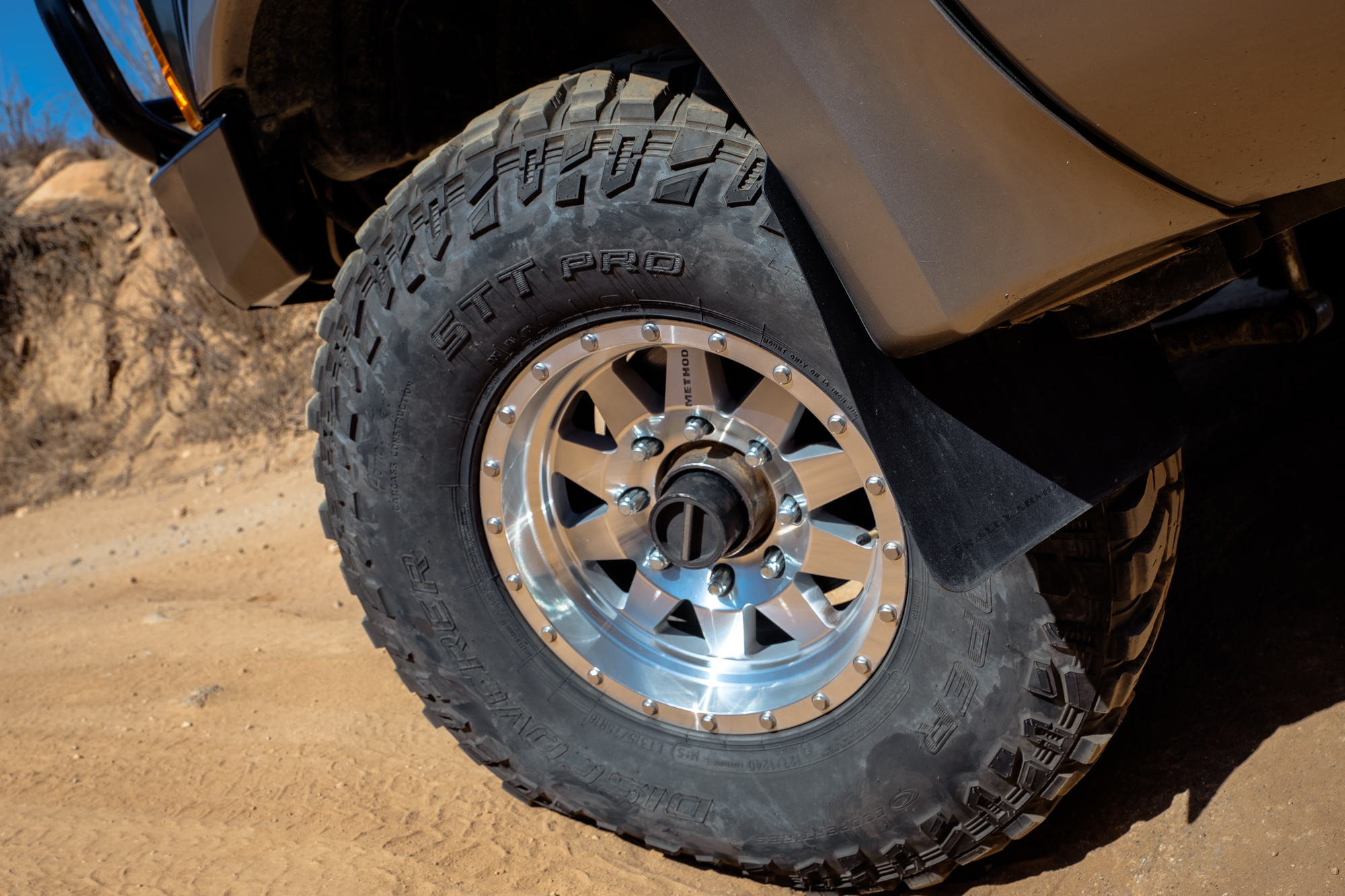
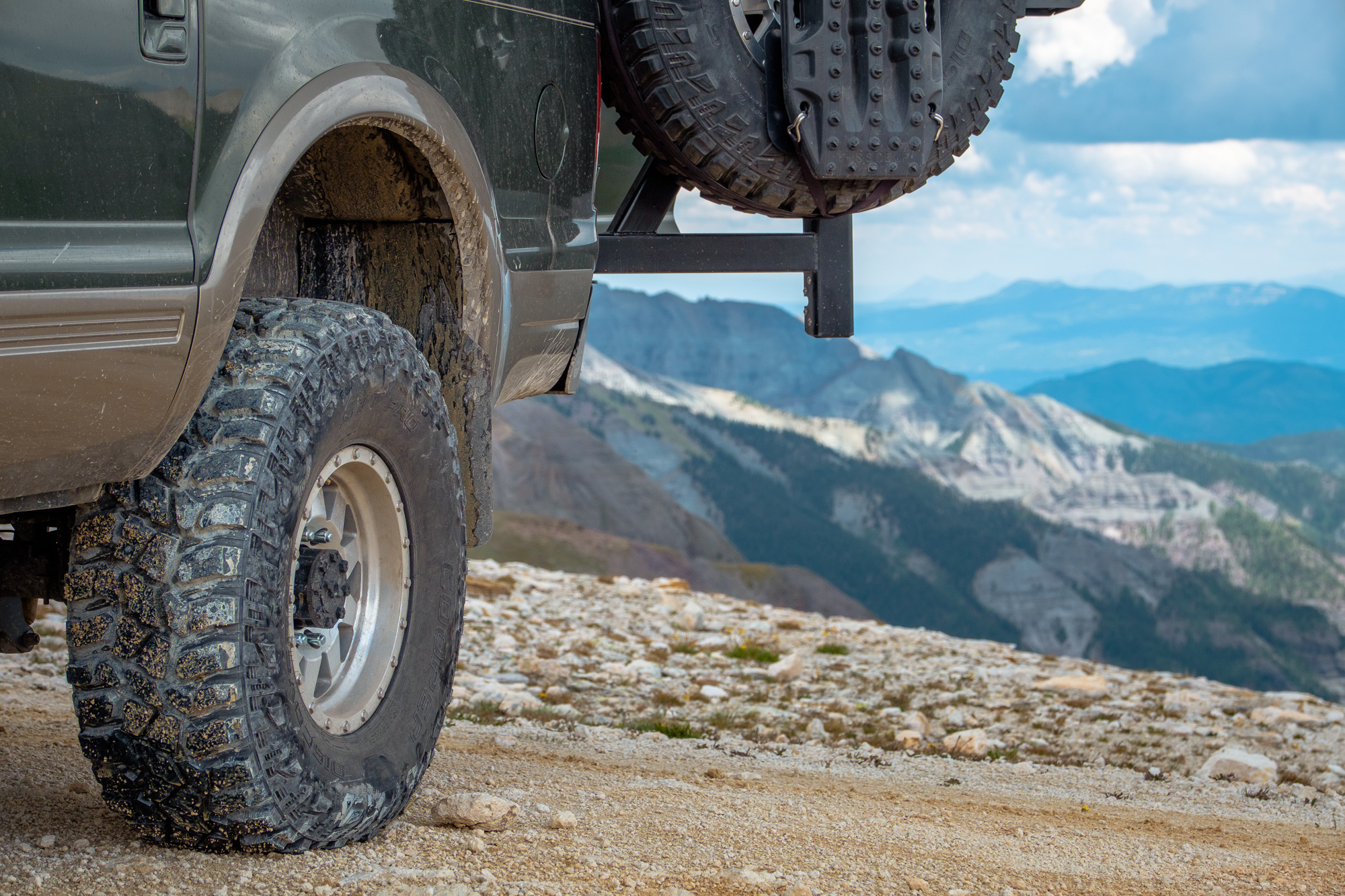
Unfortunately, their larger diameters prevented them from fitting in the factory spare location inside the vehicle. I considered several ways of addressing this but ended up choosing a dual swing-out rear bumper from Buckstop Truckware. Unlike many aluminum alternatives, the heavy-duty steel construction is able to take a beating on the trail, and the design improved my departure angle while retaining a 10,000-pound towing capacity. It included space for two LED backup lights, the factory reverse sensors, and a 120-liter Alu-Box that serves as a sort of overland junk drawer, home to all the things I don’t want in my vehicle such as firewood, fluids, and a myriad of spare bits and bobs.
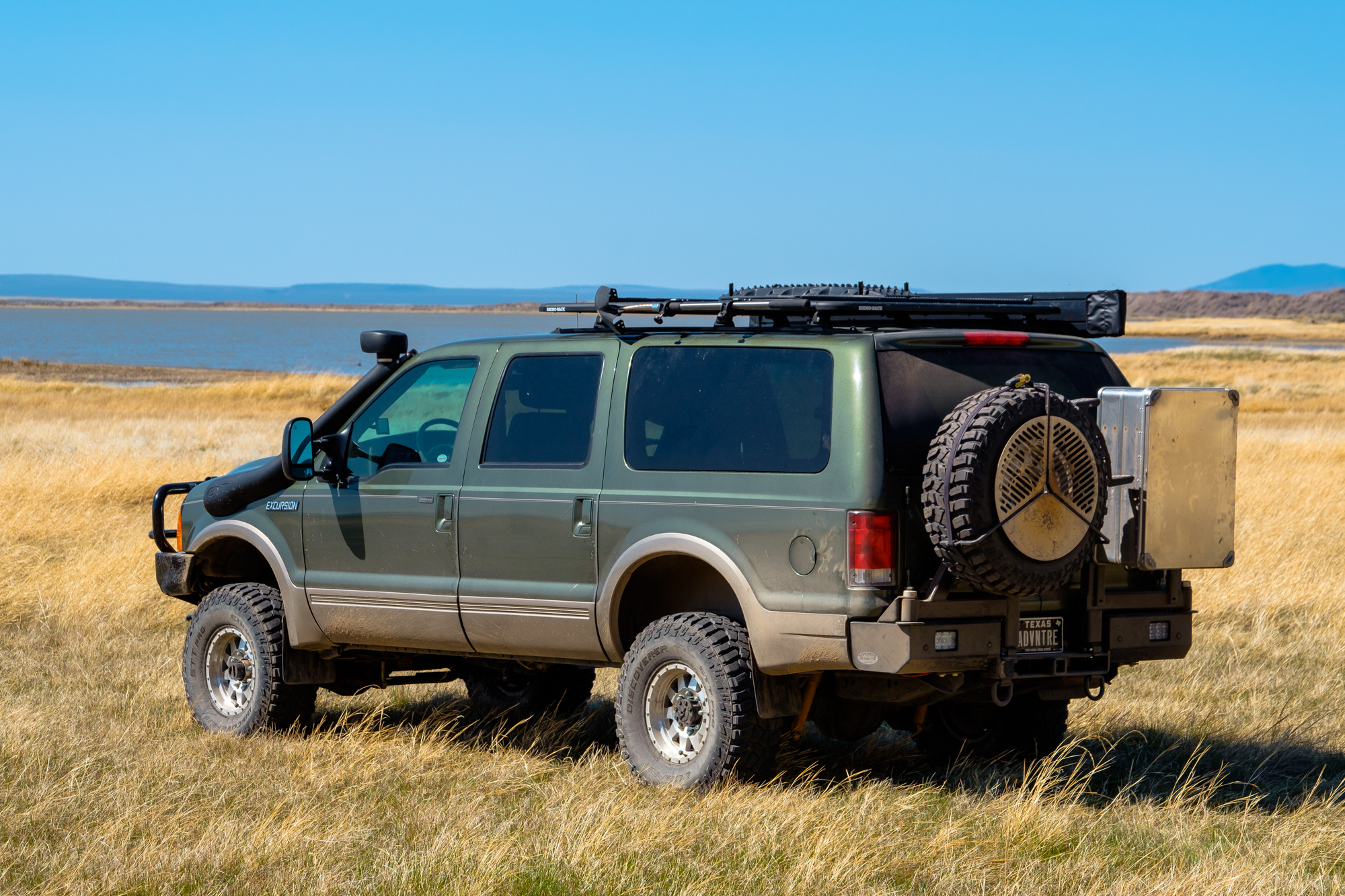
When it came time to choose a front bumper, I didn’t need to think for long. I knew I wanted something designed to keep the vehicle running and the occupants safe during an accident. Preferably something crash tested and airbag compatible. Both Buckstop and ARB had attractive options, but over the years I’ve experienced several impacts from deer and kangaroo on ARBs without damage, and thus made a decision to stick with what I know and trust. I picked up an ARB bumper designed for the F-250, and since the Excursion’s underpinnings are almost identical, it bolted right on.
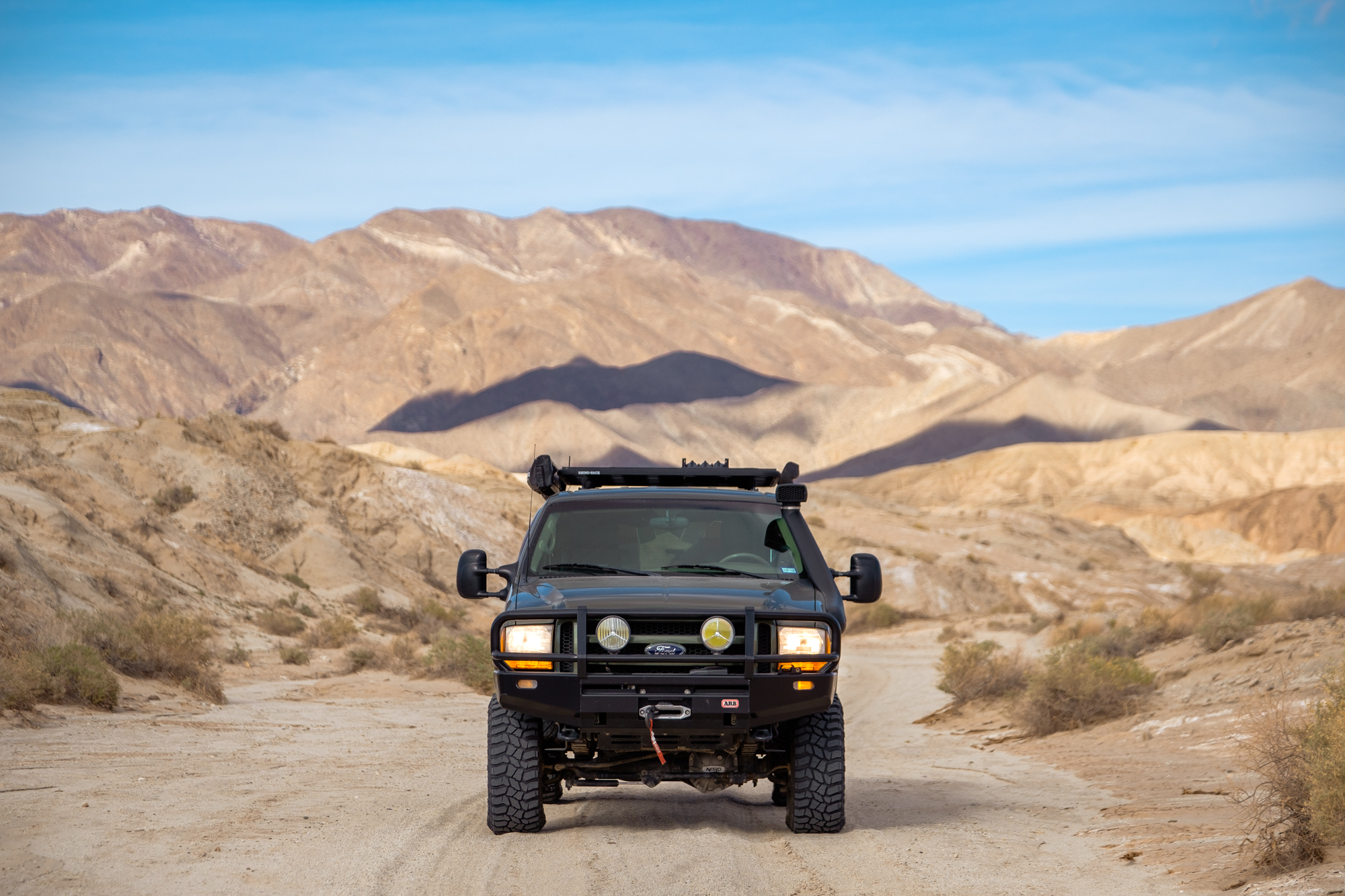
Inside the bumper, we mounted Warn’s strongest winch, a 16.5ti-S to match the Excursion’s soon to be 9,000-pound load weight. The 16.5 stands for, you guessed it, 16,500 pounds, while the S denotes the 80 feet of Spydura Pro synthetic rope that the previous generation wasn’t approved for. It boasts a 4.6 horsepower motor turning a 315:1 planetary gear set, a powerful cone brake, and robust weather sealing. Redundant safeties like an integrated diagnostics system and LED thermometric indicator also help prevent damage during strenuous use, leading to greater reliability and overall longevity.
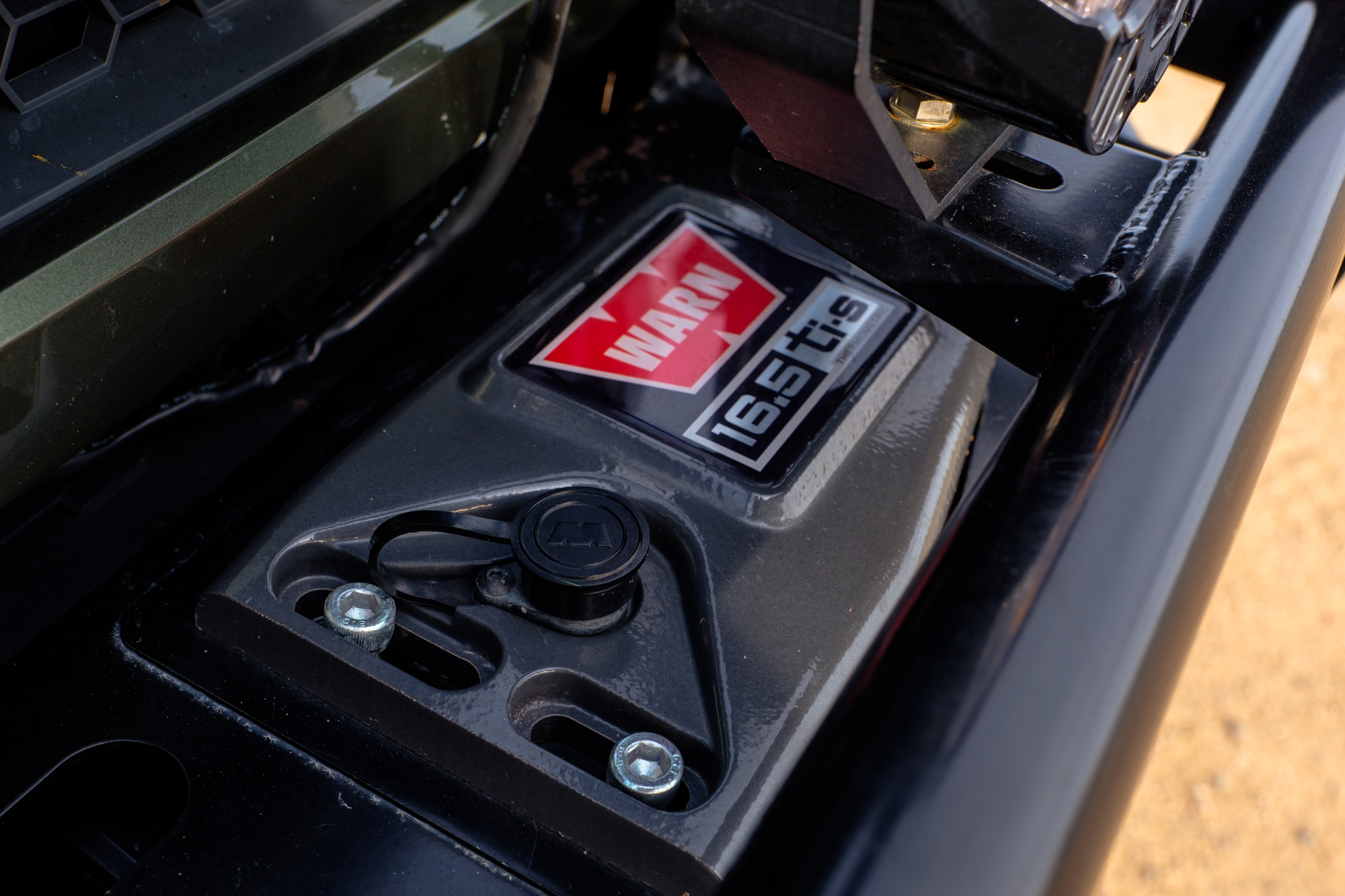
Other additions to the ARB include a set of IPF Xtreme LED Sport lights, and a Wits’ End combination air chuck and powerpoint. The air chuck is plumbed directly to the Excursion’s Extreme Outback air compressor and tank, which pumps out an impressive 2.6 CFM at 100 psi, and 6 CFM during free flow. More importantly, it does so reliably, thanks to high-end internal components, sealed bearings, and a serious air-filtration system that can cope with trail use.
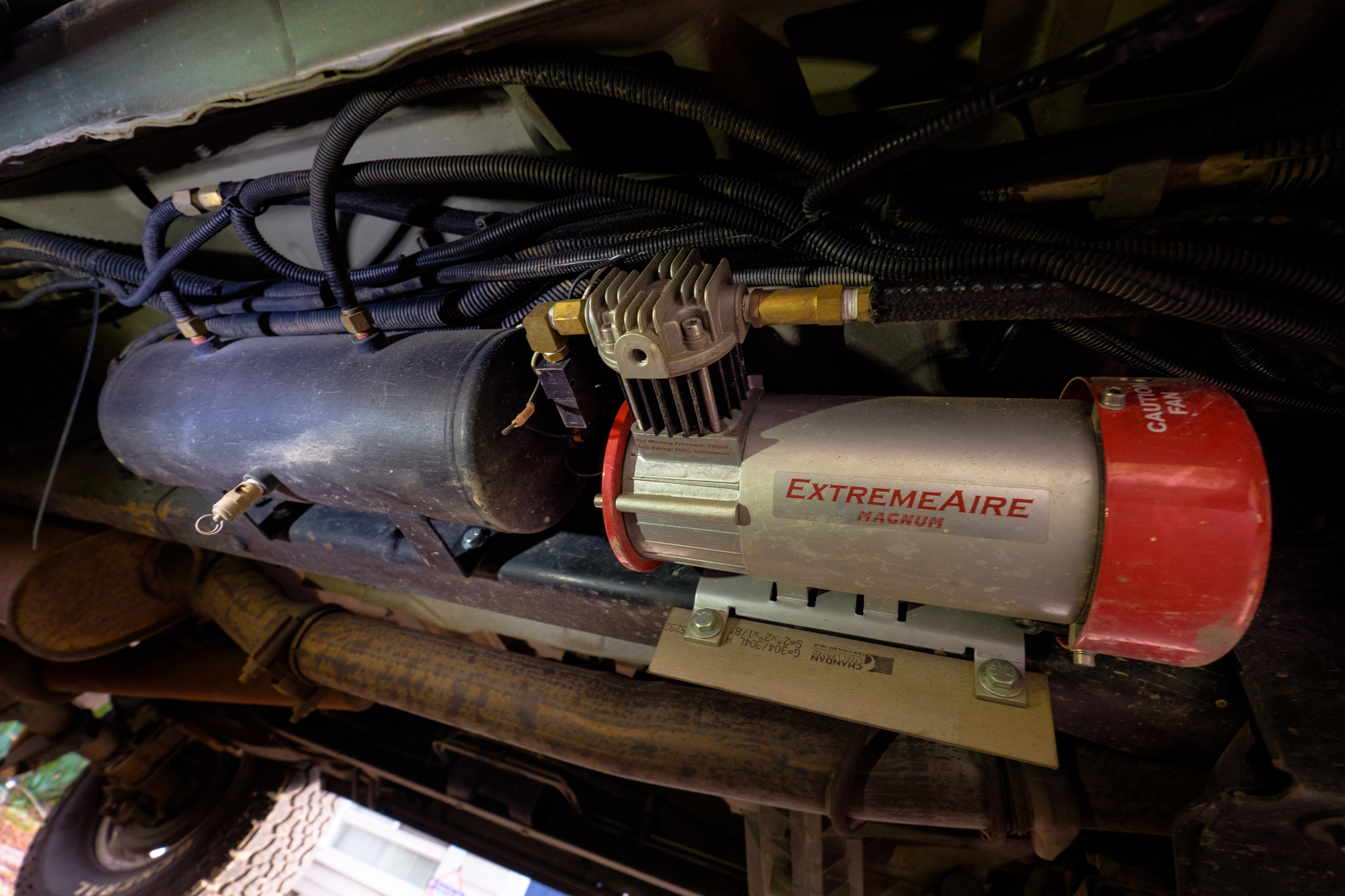
The final performance upgrades focused on making the truck run more efficiently. It came with 3.73:1 gears and a limited slip from the factory, which was alright for just the truck, but when the transmission spewed fluid on an extremely steep low-speed grade in British Columbia, it was evident changes needed to be made. I called the folks down at Just Differentials in Cashmere, Washington, and ordered a fresh set of 4.56:1 Nitro gears. These were the best choice for the 37s that I will eventually transition to, and they immediately made a huge difference in the Excursion’s performance. The fuel economy, which had dropped to around 13 mpg, shot back up to 15-18 mpg. I found my transmission running significantly cooler on long grades, and the truck felt alive again when you hit the throttle. When combined with a much larger aftermarket transmission cooler, the vehicle was running like new.
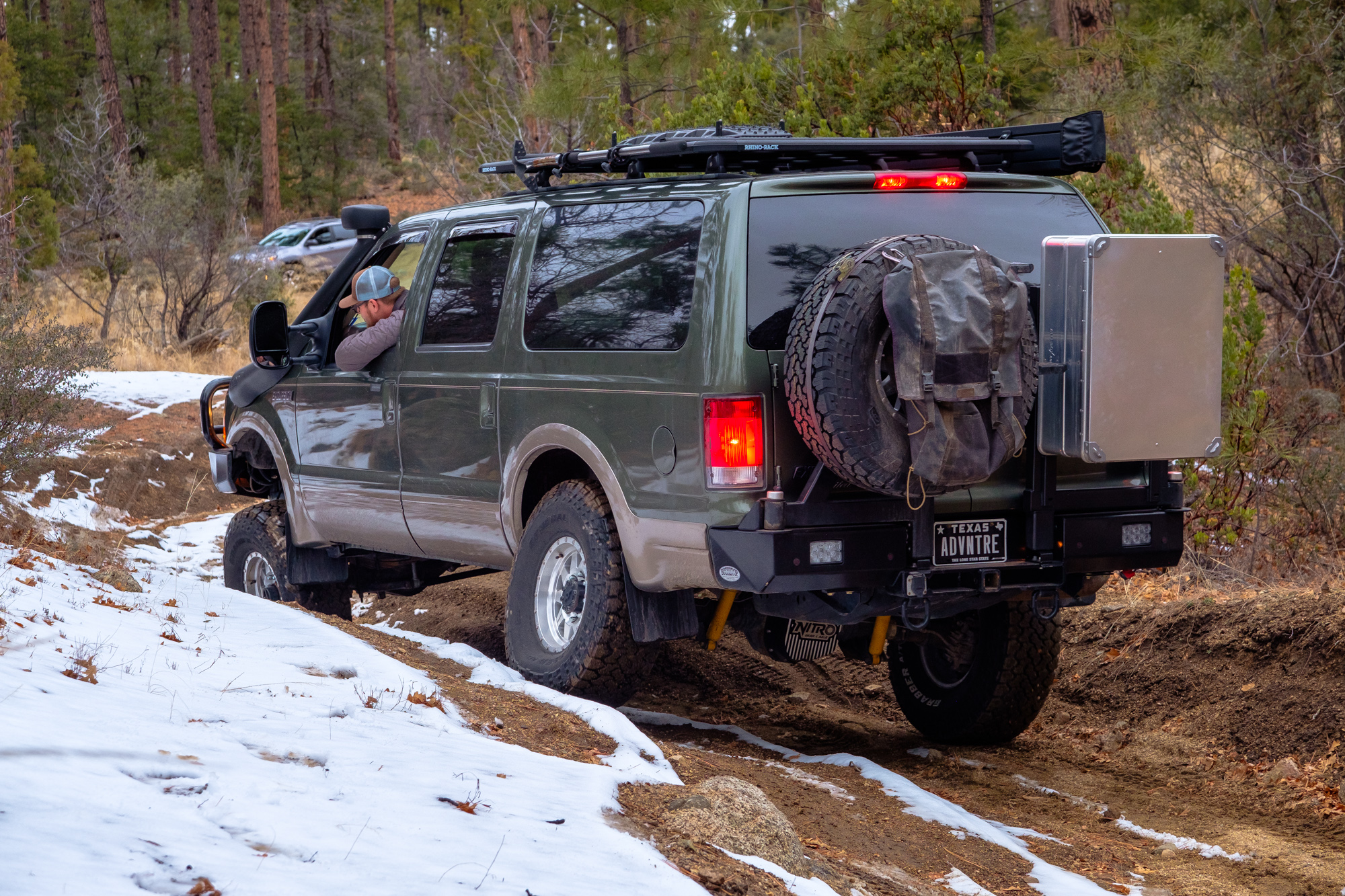

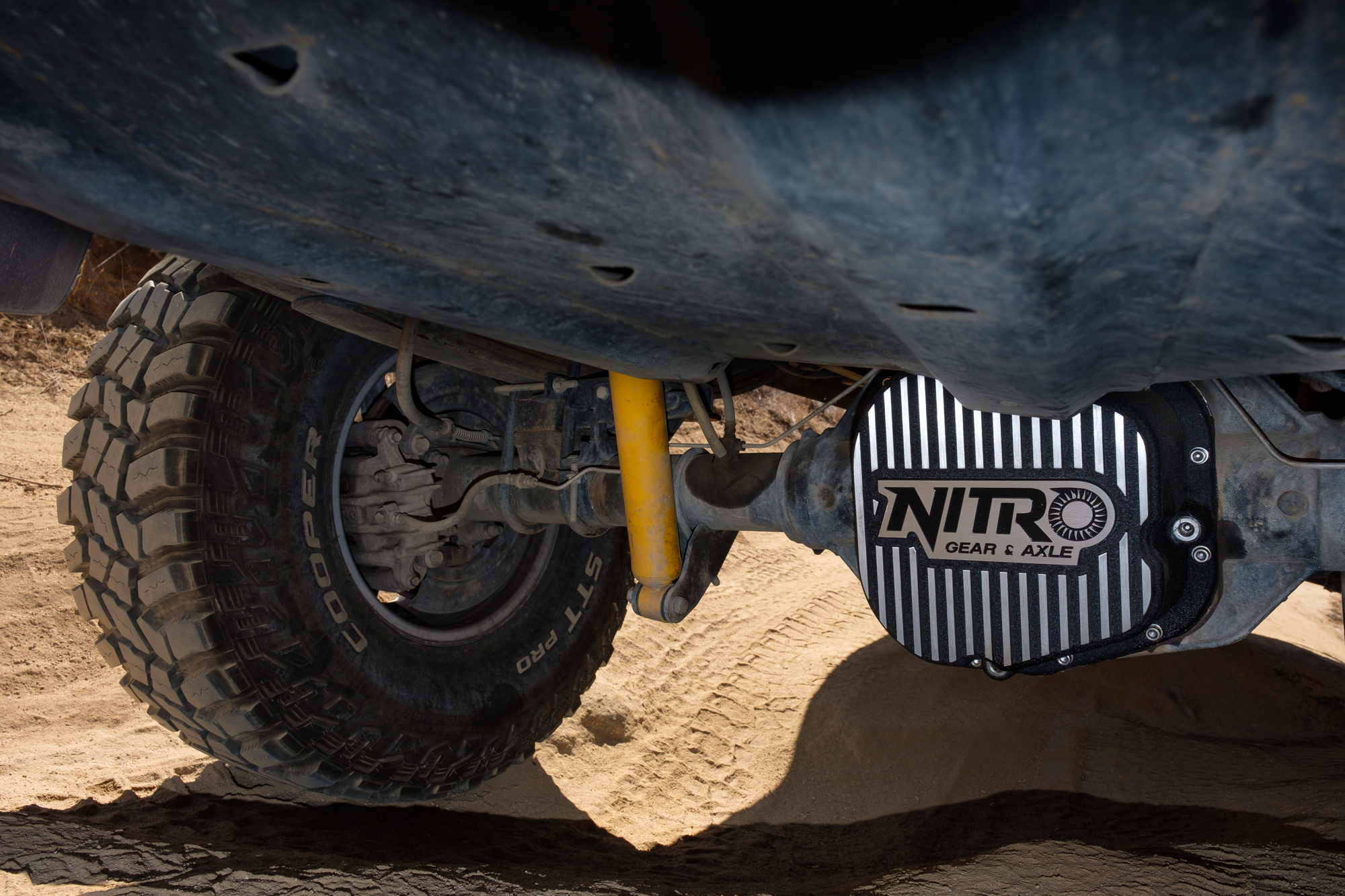
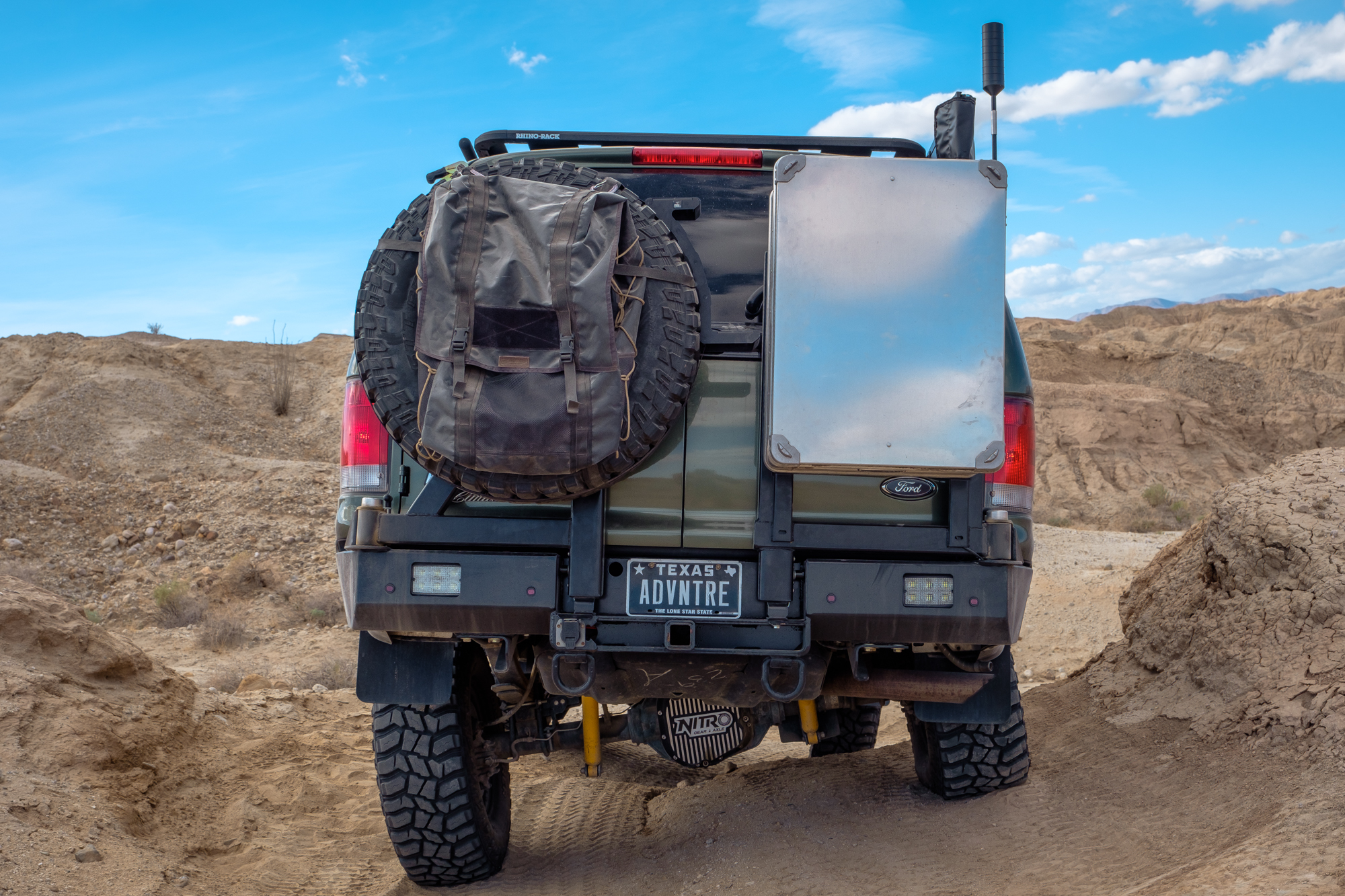
Camping and Living
It has been a long and winding road to where the camping setup on our Ford is today. It began as an effort to showcase the versatility of domestic SUVs, so I started the build with a stock interior and took advantage of the Excursion’s massive 4- by 8-foot flat sleeping space. In this configuration, the truck could easily transport five people and their gear into the backcountry for an adventure. Then two people could fold the seats down and sleep inside, while the other two or three could sleep in a roof tent up top or a ground tent.
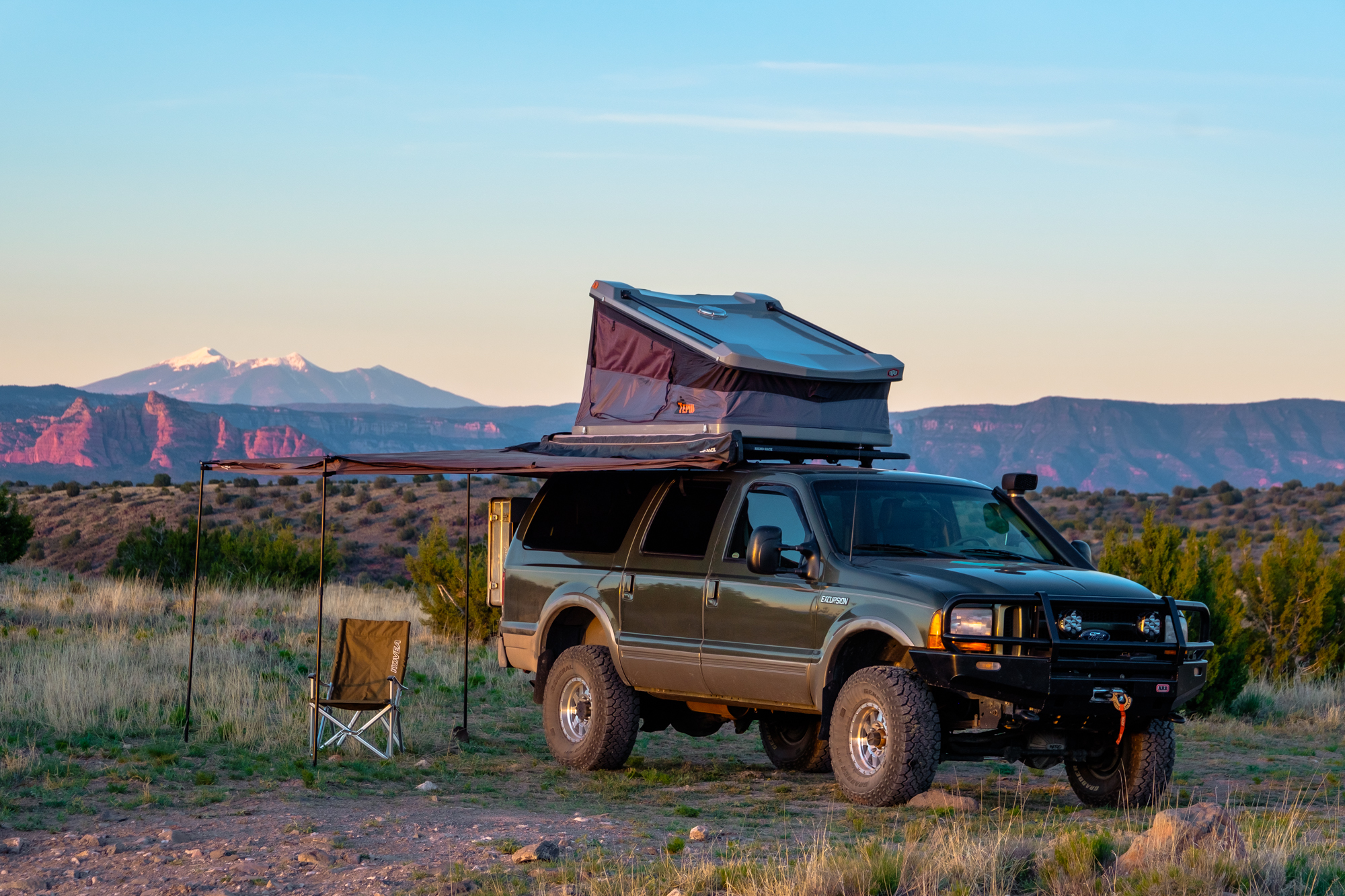
The key to making that system livable was Rhino Rack’s Pioneer platform and Batwing 270 awning. The self-contained awning deployed quickly and easily thanks to the integrated legs and gave us a covered place to hang out, cook, and escape the sun on hot days and rain on stormy nights. The rack provides a place to mount a tent when needed, or to transport paddle boards, kayaks, bikes, or other gear on our various adventures, leaving plenty of room to sleep inside the vehicle.
That setup was ideal for daily driving and short adventures, but I wanted something more organized, comfortable, and efficient when I decided to go on the road full time. I reworked the Excursion 2.0 concept in my head for months, sketching and resketching layouts while mocking up systems from cardboard. Eventually, I knew what I wanted, and it started with what was arguably the most important change for me: seats.
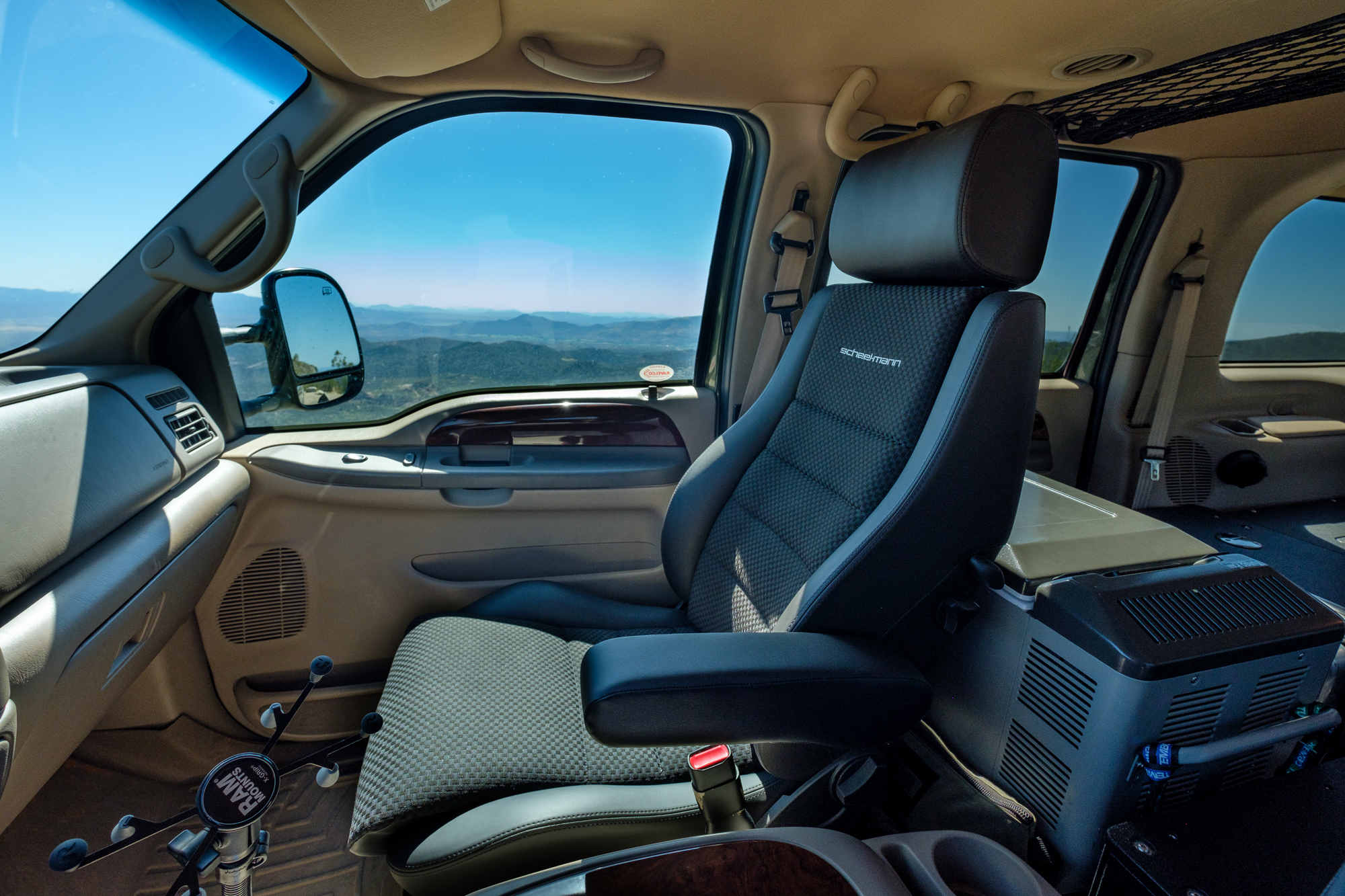
I had been driving the Excursion for some time, but thanks to my second spinal injury, long trips were becoming impossible. After a short period in the factory captain’s chairs, my back would begin to ache, and before long the sciatic pain would be unbearable. The solution was to install Scheel-Mann Vario F XXLs. These orthopedic slices of heaven can be adjusted 10 ways to fit every aspect of your body and gave me the support I desperately needed to continue traveling. Instead of arriving hunched over and exhausted, I was able to hop out of the truck and enjoy my destination, a sensation that I can honestly say is priceless.
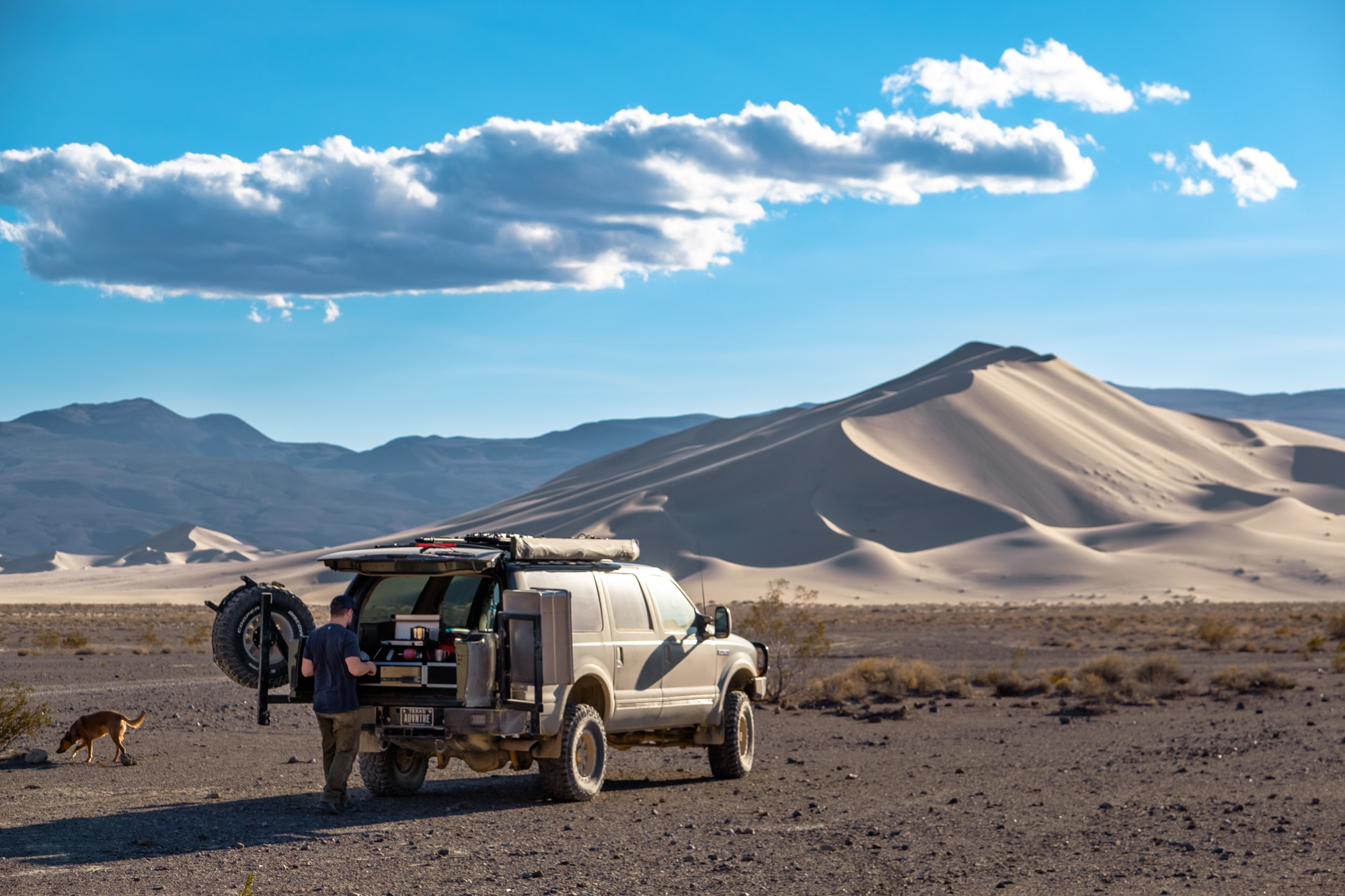
Once the seats were in, I had to make the truck livable, which for me meant being comfortable in all weather conditions, including freezing cold. The Excursion needed a heater, but I didn’t want to tote propane around with me, so I picked up an Espar D2 at Main Line Overland. It pumps diesel fuel from the factory tank into a small burner and forces air across the heating elements which is then pumped into the cabin. It can be controlled by a simple thermostat near my head when sleeping and can keep the interior toasty even in a blinding snowstorm. Best of all, it only burns 0.02 gallons of diesel per hour.
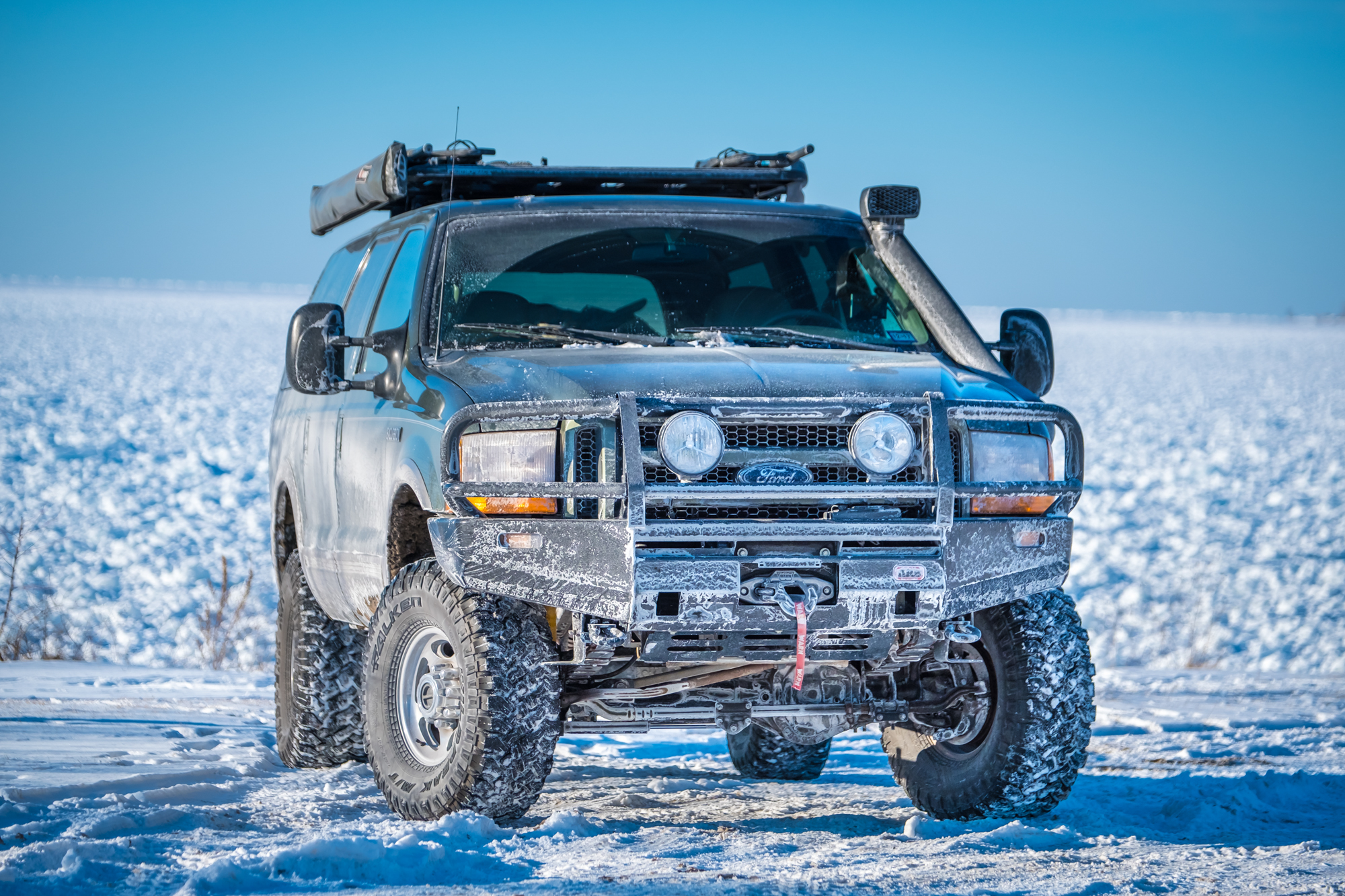
Then it was finally time to hand the truck over to Brian at Goose Gear. He took my original designs and improved them tenfold, creating a sleeping platform that stretches from the front seats to the very rear of the truck. Coated in a durable and easy to clean bullet liner, the flat deck houses four lockable storage compartments for clothes, gear, and valuables—plus an enormous quick access space for boxes of recovery gear, emergency equipment, cameras, and drones. Although some of the compartments are primarily accessed from the side or via slide-out drawers, they all feature flush-top hatches so that you can grab whatever you need without opening the truck. This way, you don’t have to get out in a rainstorm to open a drawer of clean clothes. Just roll off your bed, pop open a lid, and grab what you need.
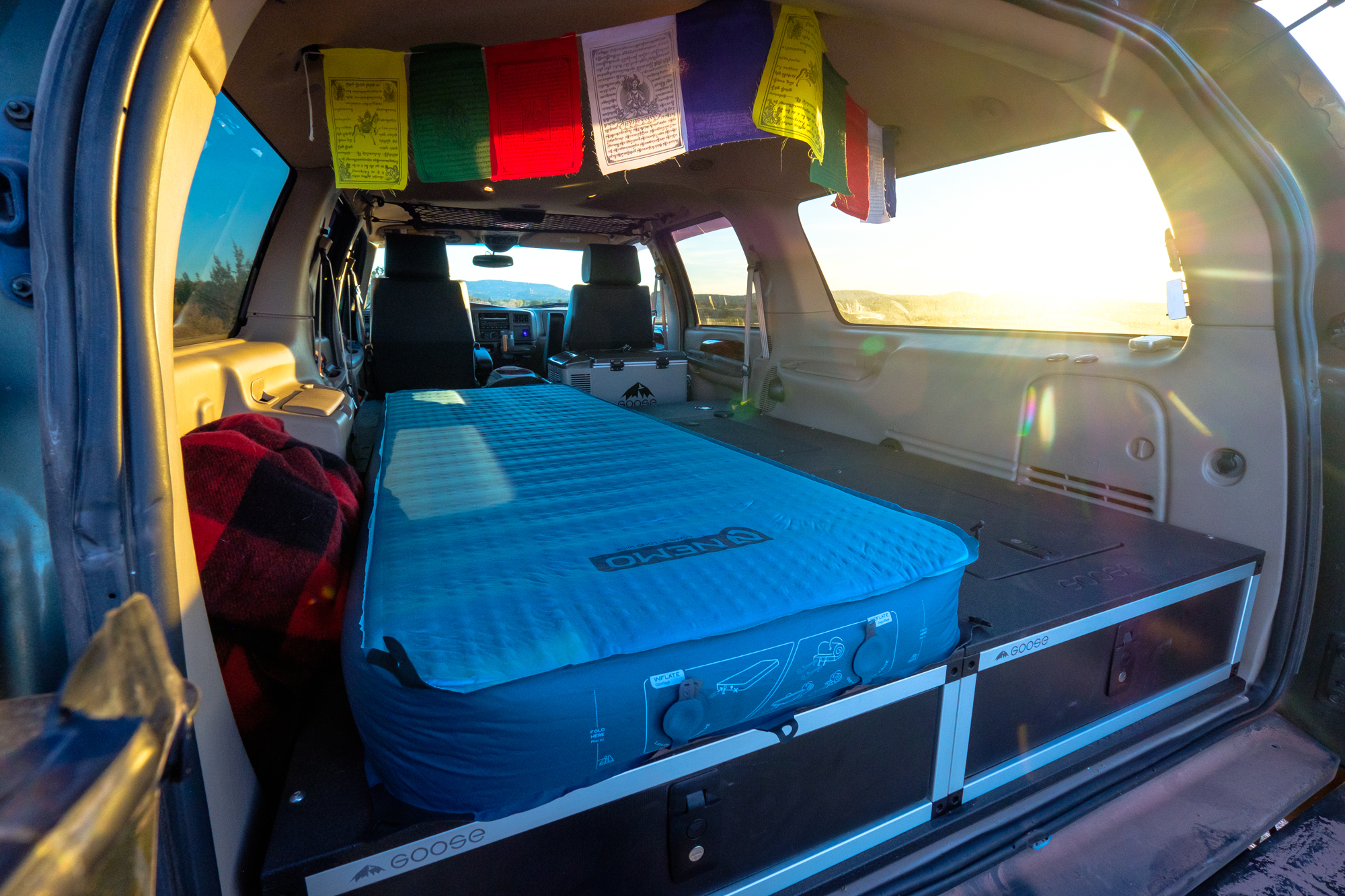
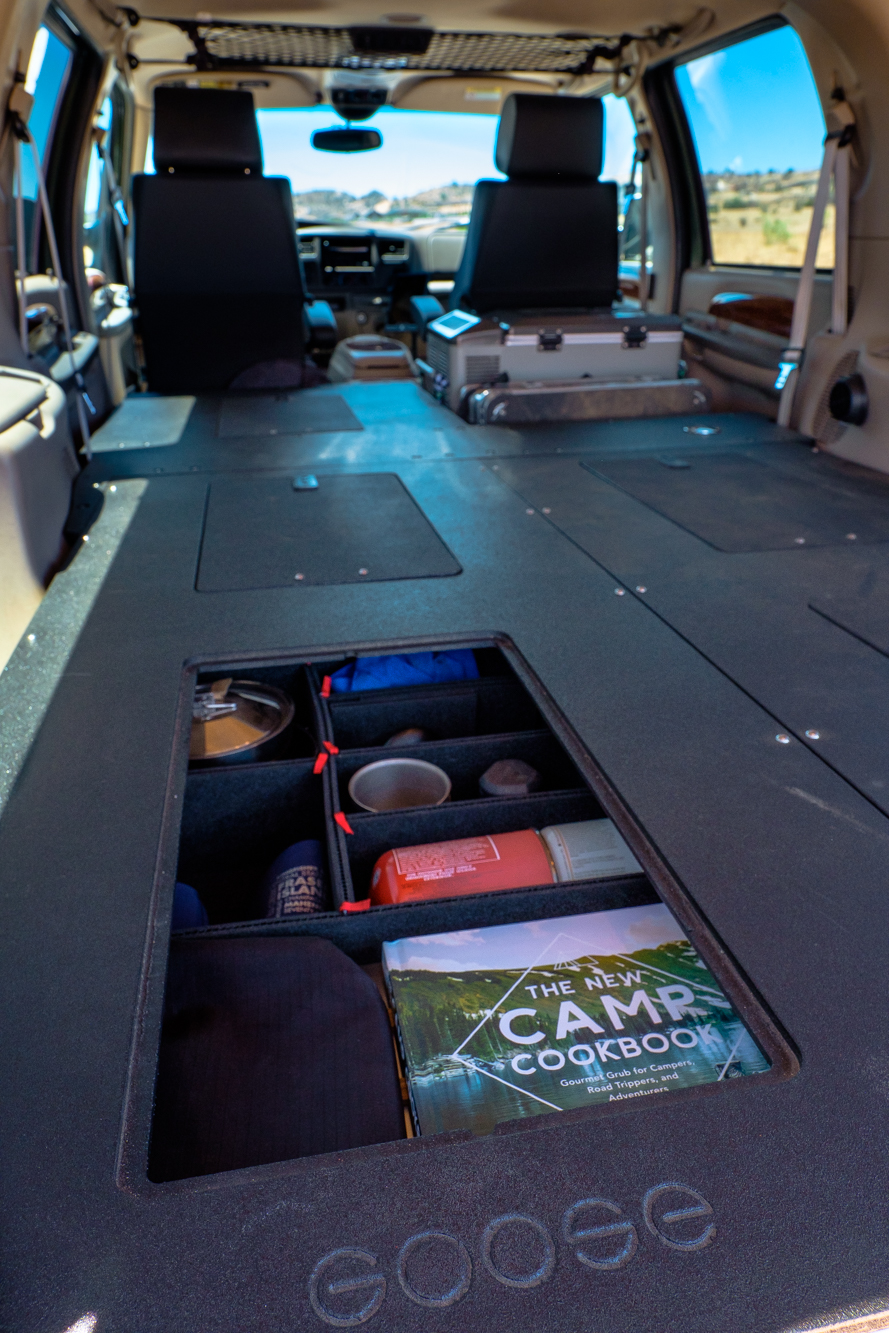
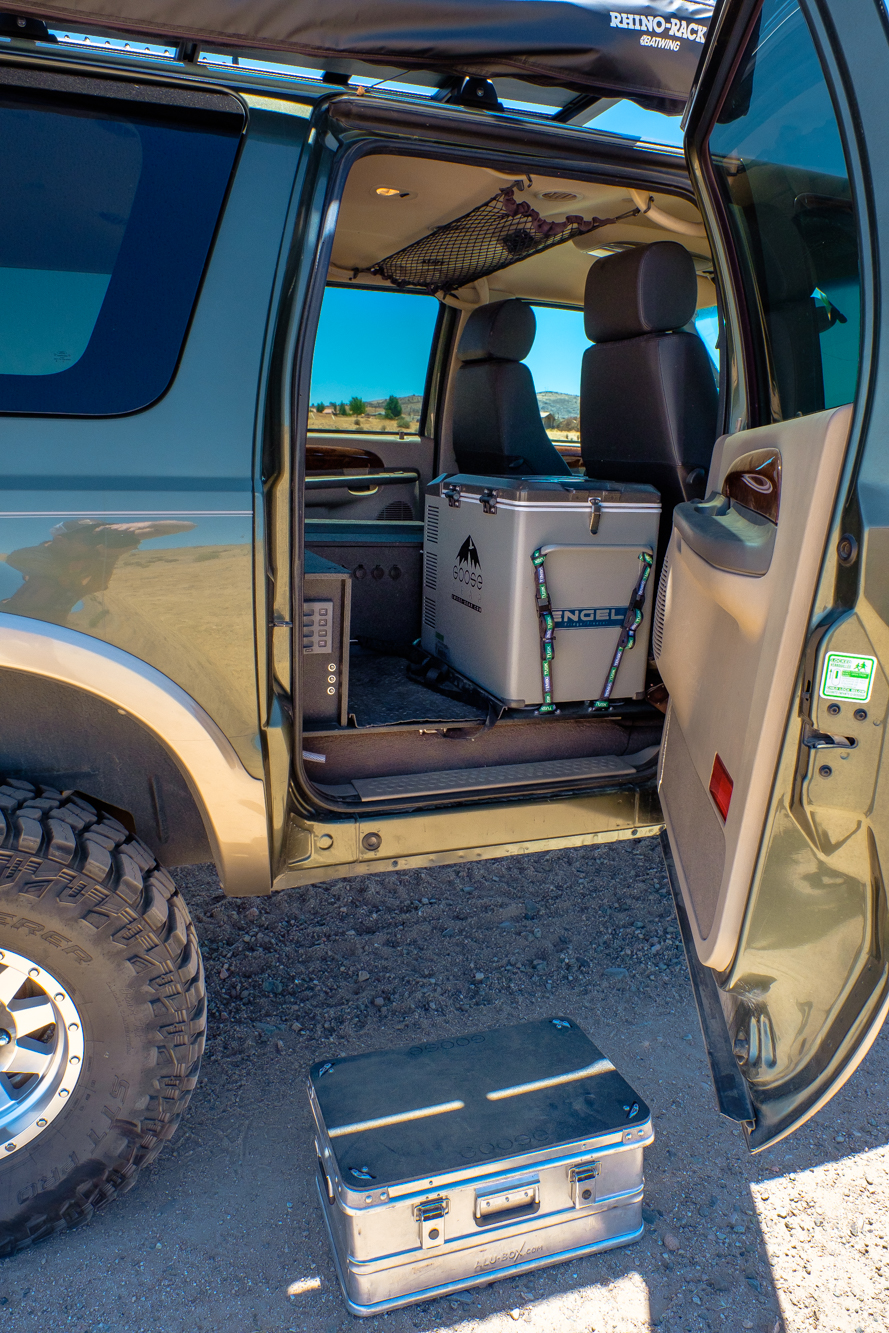

The interior also features a 13-gallon, stainless steel baffled water tank and whale pump hidden beneath the deck, four quick-charge USB points in the rear for phones, a mudroom for shoes, and an array of charging ports by the workstation for laptops and cameras. In the workspace, you can place a computer on the fridge and catch up on emails, edit a few photos, or even stream a movie over the weBoost cell booster installed next to the desk. It can pick up even the smallest traces of existing cell service in the area with its large antennas and make it stronger and faster using a router-like box hidden inside the truck. This has enabled me to browse the web and log into the office in places where I usually don’t even register a single bar.
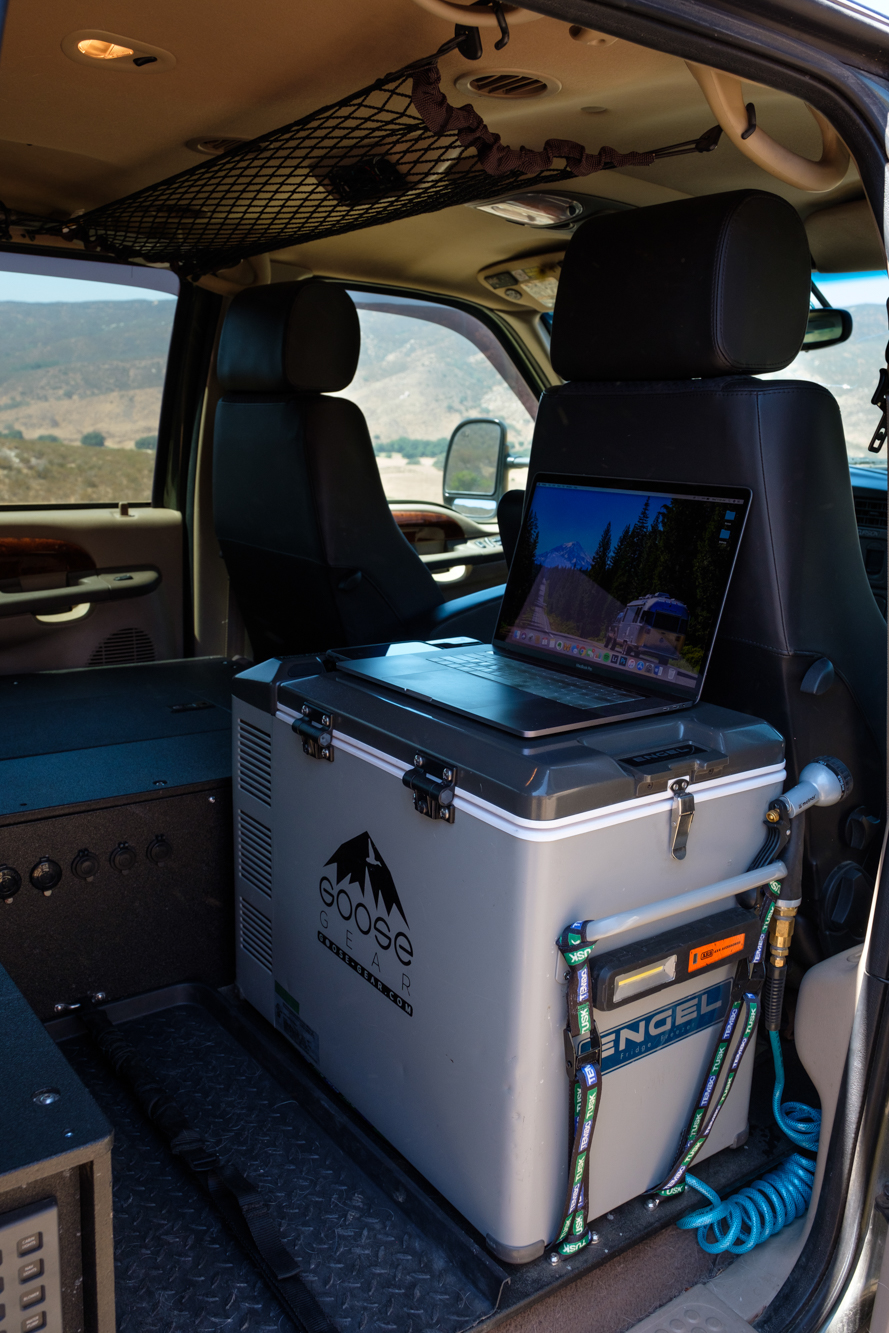
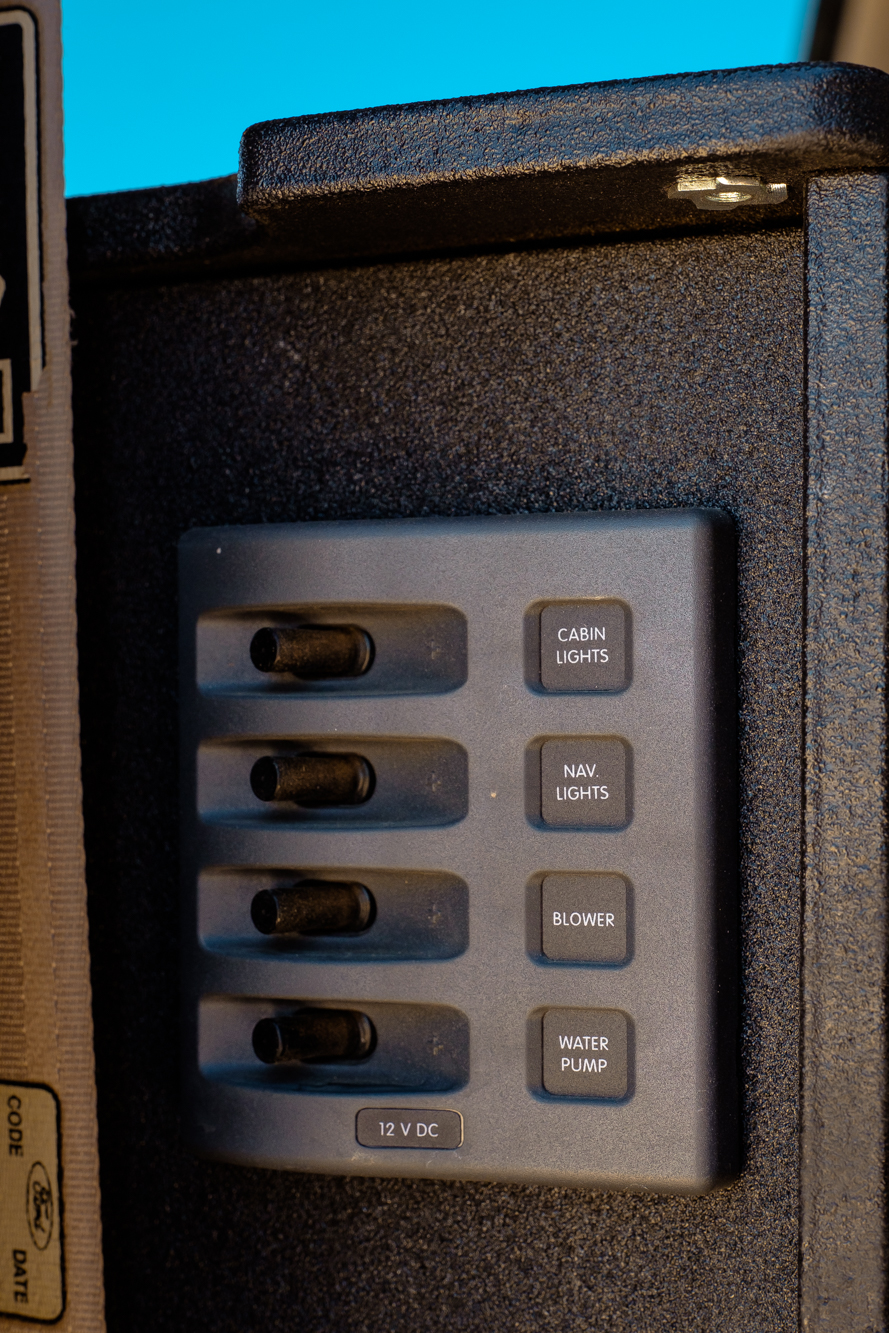

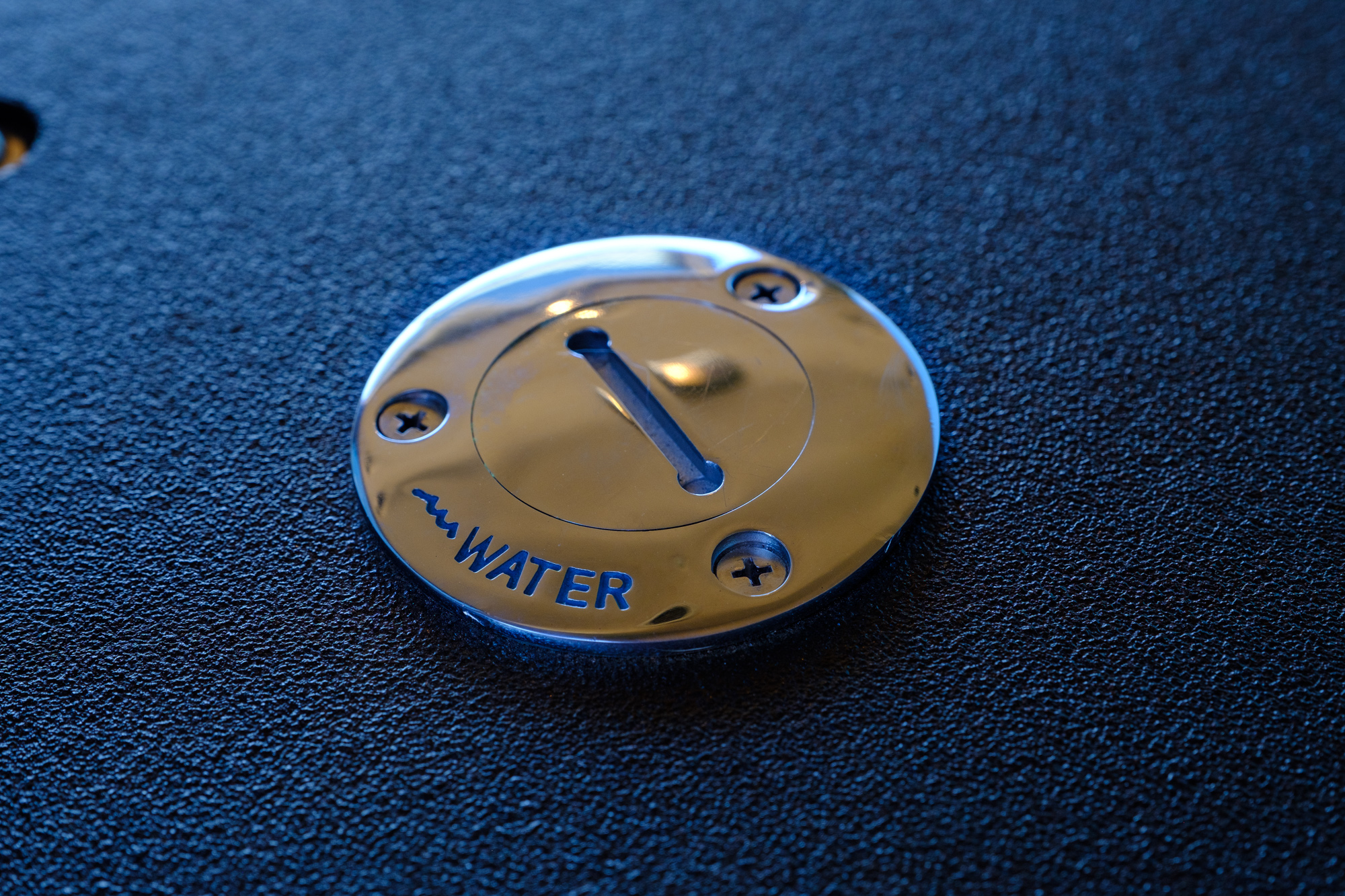
Finally, to keep the fridge cold and charge laptops and cameras when parked, we upgraded the stock batteries to two AGMs with a Flexopower Atacama 79-watt solar package. The new batteries hold up to the constant charging and discharging better than your standard automotive units, and the Atacama can keep the system topped off indefinitely with good sun. It has even survived being run over by a truck and chewed on by an animal with no loss of efficiency—a sufficient test for me.

Conclusions
The Excursion is not perfect—it has quirks and flaws, and at the end of the day is still a 19-year-old truck. Yet, with 160,000 miles, it drives like a dream, answers every call to adventure, and on many occasions tows our Airstream along for the ride. It is capable enough to tackle remote trails and comfortable enough to stay a while once we get there. After two years of use all over North America, I can say that this grocery-fetching, soccer-practice-conquering, family SUV is one heck of a good overland truck and exceeded all of my initial expectations. Sadly, I know that my time with this truck is limited. Some day soon there will have to be a replacement, but I’m beginning to wonder if there will ever be a substitute. Only time will tell, but one thing is for sure. Whatever comes next is going to have some rather big shoes to fill.
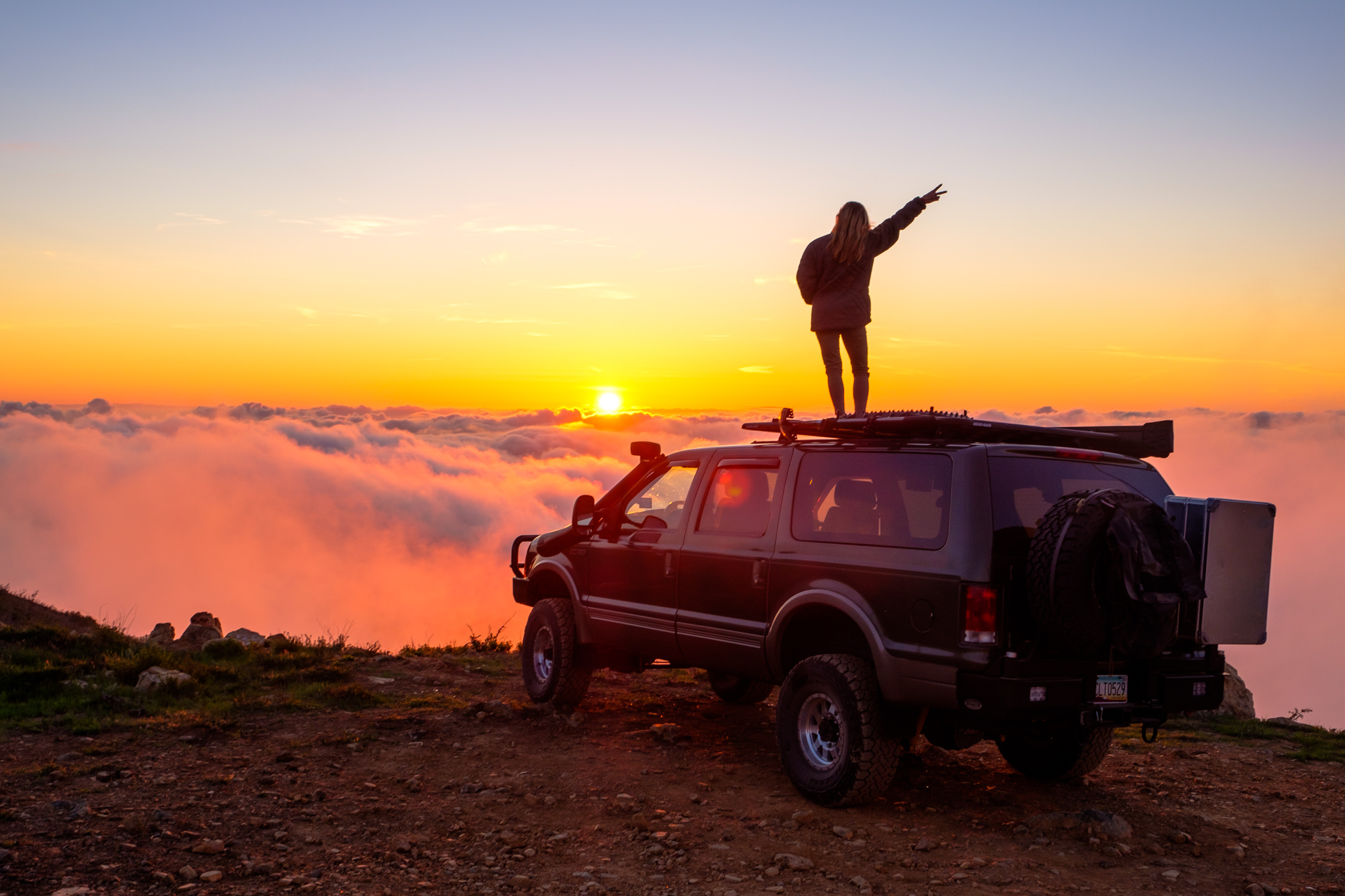


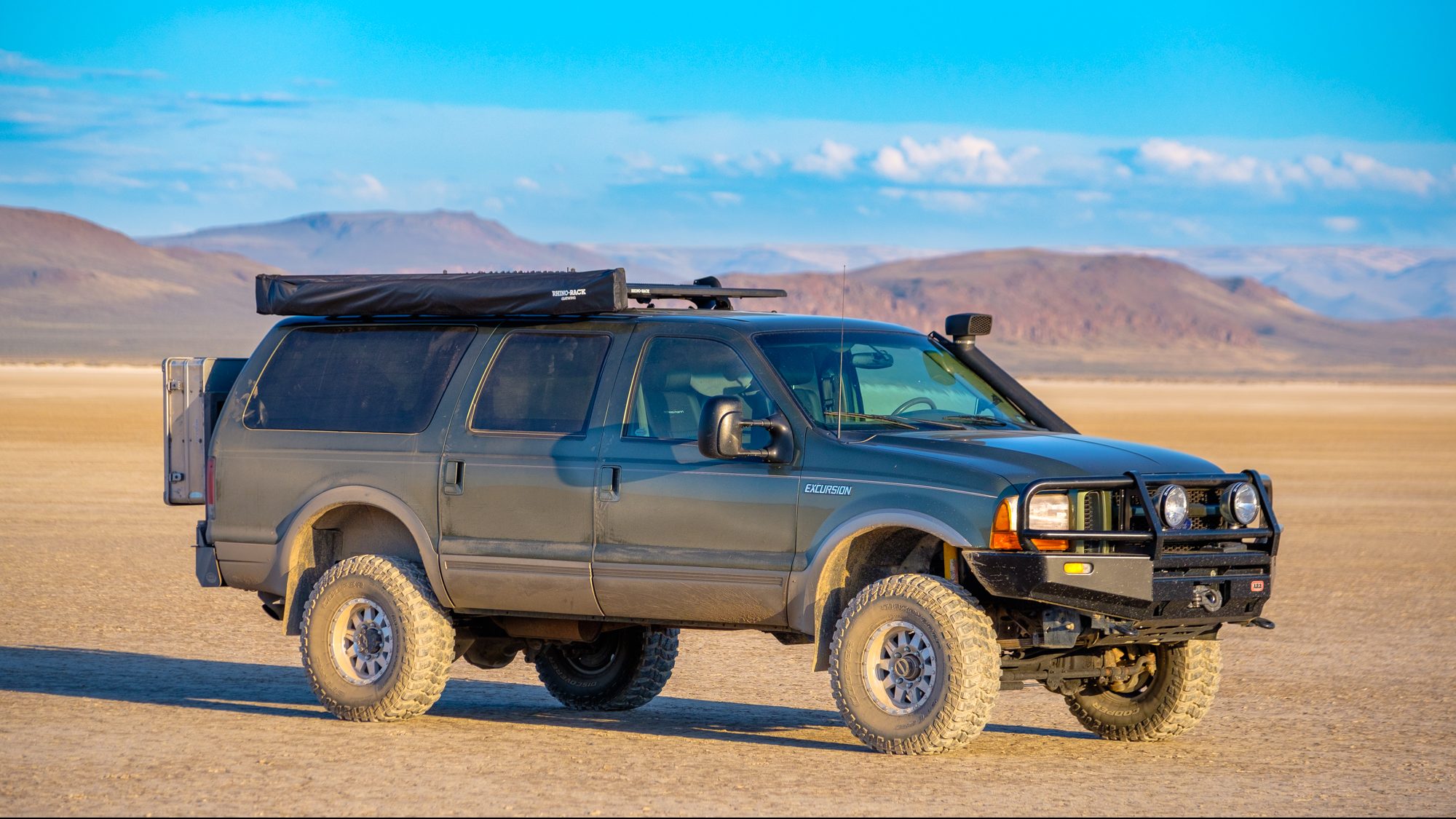
One Comment
Ed Rodrigues
April 19th, 2019 at 5:09 amI to have a 2000 Excursion and it’s been a great truck. (Bought in 2002)
Don’t overlook the gas V10, gets worse gas mileage, but in my area
Deisel is a buck more a gallon, also maintenance costs are cheap.